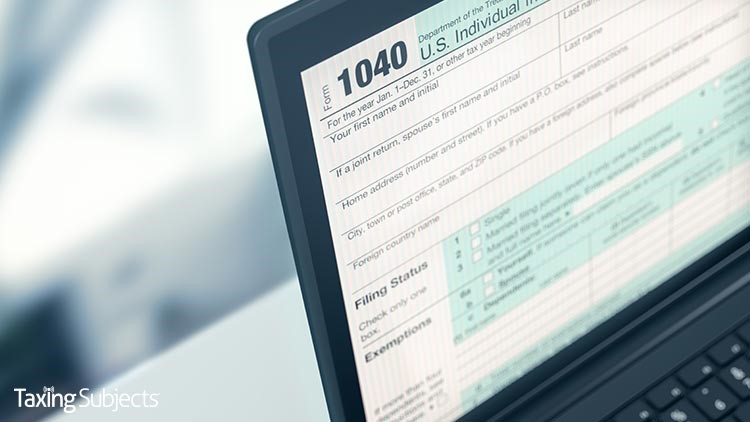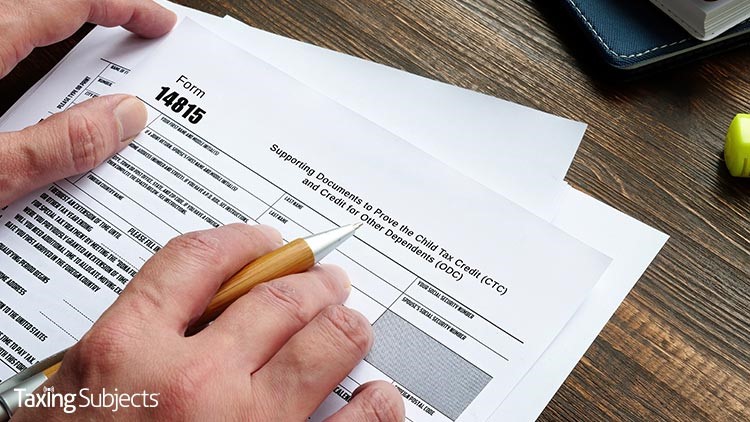by | Feb 19, 2021 | Tax Tips and News
The Internal Revenue Service says, as required by law, it has issued all the first and second round Economic Impact Payments (EIPs) that were legally permitted. So, the IRS is now turning its full attention to the 2021 filing season.
Beginning in April of 2020, the IRS and the U.S. Department of the Treasury began delivering the first round of Economic Impact Payments just two weeks after the enabling legislation was passed.
More than 160 million EIPs were issued to taxpayers totaling over $270 billion. This was done while the IRS had to simultaneously manage an extended filing season. Since Congress enacted the COVID-related Tax Relief Act of 2020, the IRS has delivered more than 147 million second-round Economic Impact Payments totaling over $142 billion.
Terms of the legislation dictated that the second round of payments had to be issued by Jan. 15, 2021.
Some of the second-round EIPs may yet be in the mail. But the IRS says it has issued all the first- and second-round Economic Impact Payments permitted by the law, based on eligibility.
The online IRS tool, Get My Payment, was last updated on Jan. 29 to show the final payments. The agency says Get My Payment won’t be updated again for first- or second-round EIPs.
The Recovery Rebate Credit remains for those not receiving EIPs
Most people who are eligible for the Recovery Rebate Credit have already received it, in advance, through the two rounds of Economic Impact Payments.
Those who didn’t receive an EIP—or didn’t get the full amounts—may be able to qualify for the Recovery Rebate Credit, but will have to file a 2020 income tax return to get it.
Eligibility for the credit and the amount a taxpayer is entitled to are based on 2020 tax year information. Economic Impact Payments were based on 2019 tax year information.
For the first round of Economic Impact Payments, a 2018 return may have been used for qualification if the 2019 return was not filed or processed.
Be prepared before filing
To claim the Recovery Rebate Credit, individuals need to know the amounts of any Economic Impact Payments they received. People who do not have their Economic Impact Payment notices can get the numbers of their first- and second-round EIPs through their individual online account.
Each spouse of married couples who file jointly will have to log into their own account.
The IRS urges taxpayers to file a complete and accurate tax return to avoid delays in refunds. Using a trusted tax professional can ensure that the taxpayer is claiming the credits and deductions they are qualified for and that the return will be e-filed securely. Using direct deposit further speeds up the process.
Direct deposit options go beyond just bank accounts. Many prepaid debit cards and several mobile apps can also be used to receive direct deposits when a routing and account number is provided on the return.
For more information, check out Publication 5486, Claiming the Recovery Rebate Credit on a 2020 Tax Return; and the Instructions for Forms 1040 and 1040-SR.
Source: IR-2021-38
– Story provided by TaxingSubjects.com
by | Feb 16, 2021 | Tax Tips and News
Filing season is finally here and for many tax professionals, the watchwords are speed and accuracy. The Internal Revenue Service says it can help with both.
The IRS is urging tax pros—and taxpayers—to take the simple steps needed to help ensure their returns are accurate, to speed up refunds and so avoid a number of pandemic-related pitfalls.
Their appeal isn’t new; every year the IRS encourages taxpayers to e-file their returns and to use direct deposit to get their refunds. But this year it’s extra-important to avoid delays.
By using their tax professional of choice, taxpayers can file electronically, safely and accurately. The IRS adds that paper-filed returns and paper checks will take even longer to process this year for a variety of reasons.
Now that filing has begun, taxpayers have until Thursday, April 15 to file their 2020 tax return and pay any tax due. The IRS expects to receive more than 160 million individual tax returns this year with nine out of 10 returns filed electronically. At least eight out of 10 taxpayers will get their refunds by direct deposit.
“The pandemic has created a variety of tax law changes and has created some unique circumstances for this filing season,” said IRS Commissioner Chuck Rettig. “To avoid issues, the IRS urges taxpayers to take some simple steps to help ensure they get their refund as quickly as possible, starting with filing electronically and using direct deposit.”
“Following months of hard work, we are ready to start this year’s tax season,” Rettig added. “Getting to this point is always a year-round effort for the IRS and the nation’s tax community. Doing it in a continuing COVID-19 environment while simultaneously delivering stimulus payments for the nation is an unprecedented accomplishment by IRS employees. I also want to thank all our tax partners and tax professionals for their hard work that makes tax time smoother for the nation. All of us stand ready to serve America’s taxpayers during this important filing season.”
Review tax changes to be tax-ready
Last year’s sweeping tax changes affected individual taxpayers and their families. But they also affect the tax returns they’re filing this year. A new IRS fact sheet explains what taxpayers need to know to file a complete and accurate tax return.
The IRS says it recognizes that filing this year could be challenging for some taxpayers, so it’s important to understand how to claim credits and deductions, to get a refund in a timely fashion and to meet all tax responsibilities.
Recovery Rebate Credit for those still eligible for Economic Impact Payments. Most people received Economic Impact Payments (EIPs) automatically, and anyone who got the maximum amount doesn’t need to include any information about the payments when they file.
However, those who didn’t get a payment—or only received a partial payment—may be eligible to claim the Recovery Rebate Credit when they file their 2020 tax return. Check out the guidelines for the credit for more information.
More language options available. This year marks the first time Forms 1040 and 1040-SR are available in Spanish. The IRS also now has a new form that allows taxpayers to request that they receive information from the agency in their preferred language. The Schedule LEP, Request for Change in Language Preference, allows taxpayers to request information in some 20 different languages besides English.
Don’t forget any retirement-plan distributions. Because of the pandemic, some taxpayers found it necessary to take early distributions from 401(k) plans and traditional IRAs in 2020.
Under the CARES Act, those distributions—up to $100,000—are not subject to the 10% additional tax that otherwise generally applies to distributions made before an individual reaches age 59 ½.
In addition, a coronavirus-related distribution can be included in income in equal installments over a three-year period, and an individual has three years to repay a coronavirus-related distribution to a plan or IRA and undo the tax consequences of the distribution.
Taxpayers should also note that they can make contributions to traditional IRAs until April 15, 2021, and still deduct that amount on their 2020 tax return, if eligible.
Deduction now allowed for charitable cash contributions. During a previous round of tax reform, deductions for contributions to charitable organizations went away for non-itemizers. That’s changed now, thanks to the CARES Act.
Taxpayers who don’t itemize can take a charitable deduction of up to $300 for cash contributions made in 2020 to qualified organizations. For this deduction, the qualifying organizations are limited to religious, charitable, educational, scientific or literary purposes.
As always, e-file is best. We’ve said it before: the safest and best way to file a complete and accurate tax return is to file electronically and use direct deposit. Both of these steps are where tax pros shine.
Most refunds are issued in less than 21 days, but some may take longer.
Refunds can be tracked by using Where’s My Refund? on IRS.gov or by downloading the IRS2Go mobile app. The app allows connected taxpayers to get a personalized refund date as soon as 24 hours after the return is submitted electronically.
For filers claiming the Earned Income Tax Credit or Additional Child Tax Credit, an update to Where’s My Refund? should show up by Feb. 22. Remember that the IRS cannot answer refund status questions unless it’s been 21 days since the return was e-filed.
Need more help?
IRS tax help is available 24 hours a day on IRS.gov, where people can find answers to tax questions and resolve tax issues online from the safety of their home. The Let Us Help You page helps answer most tax questions, and the IRS Services Guide links to other important IRS services.
For an in-depth perspective on how the IRS is preparing for a successful filing season, join Wage and Investment Commissioner and Chief Taxpayer Experience Officer Ken Corbin in his column, A Closer Look.
Source: IR-2021-35
– Story provided by TaxingSubjects.com
by | Feb 14, 2021 | Tax Tips and News
Today marks the official start of filing season, meaning millions of taxpayers across the country are starting to gather tax-related documents ahead of a visit with their tax preparer. For their part, the Internal Revenue Service is hard at work providing helpful tips about necessary forms and tax credits.
One of the latest IRS reminders focuses on the credit for other dependents. In the press release, the agency notes that taxpayers with dependents who no longer qualify for the child tax credit may still be able to claim the credit for other dependents.
Worth up to $500, the credit for other dependents—like the child tax credit—begins to phaseout when individual filers make more than $200,000 and married couples filing jointly make more than $400,000. Provided the filing taxpayer’s income does not enter the phaseout threshold and their dependent is in one of the following categories, the IRS says they may be able to claim the full credit:
- Dependents who are age 17 or older.
- Dependents who have individual taxpayer identification numbers.
- Dependent parents or other qualifying relatives supported by the taxpayer.
- Dependents living with the taxpayer who aren’t related to the taxpayer.
When claiming a qualifying dependent on their return, the IRS also reminds taxpayers to make sure that the dependent is “a U.S. citizen, national, or resident alien” and cannot also be used “to claim the child tax credit or additional child tax credit.” However, the agency notes there are two other dependent-related credits that are still available for taxpayers who claim the credit for other dependents.
“Taxpayers can claim the credit for other dependents in addition to the child and dependent care credit and the earned income credit,” explains the IRS. “They can use the IRS Interactive Tax Assistant, Does My Child/Dependent Qualify for the Child Tax Credit or the Credit for Other Dependents?, to help determine if they are eligible to claim the credit.”
The IRS also recommends reviewing Publication 972, Child Tax Credit and Credit for Other Dependents and Publication 501, Dependents, Standard Deduction and Filing Information for more information.
Source: Tax Tip 2021-18
– Story provided by TaxingSubjects.com
by | Feb 13, 2021 | Tax Tips and News
Tax professionals across the country are being warned by the Internal Revenue Service, state tax agencies and the tax industry to be on the lookout for a new scam to steal their Electronic Filing Identification Numbers (EFINs).
Security Summit partners say this new scheme serves as another reminder that tax pros are still prime targets for identity thieves. These criminals try to steal client data and tax preparers’ identities that will allow them to file fraudulent tax returns for big refunds.
“Phishing scams are the most common tool used by identity thieves to trick tax professionals into disclosing sensitive information, and we often see increased activity during filing season,” said IRS Commissioner Chuck Rettig. “Tax professionals must remain vigilant. The scammers are very active and very creative.”
How does the EFIN phishing scam work?
The new scam email says it is from “IRS Tax E-Filing” and carries the subject line “Verifying your EFIN before e-filing.”
The IRS warns tax pros not to take any of the steps outlined in the email, especially responding to the email. The body of the bogus email states:
In order to help protect both you and your clients from unauthorized/fraudulent activities, the IRS requires that you verify all authorized e-file originators prior to transmitting returns through our system. That means we need your EFIN (e-file identification number) verification and Driver’s license before you e-file.
Please have a current PDF copy or image of your EFIN acceptance letter (5880C Letter dated within the last 12 months) or a copy of your IRS EFIN Application Summary, found at your e-Services account at IRS.gov, and Front and Back of Driver’s License emailed in order to complete the verification process. Email: (fake email address)
If your EFIN is not verified by our system, your ability to e-file will be disabled until you provide documentation showing your credentials are in good standing to e-file with the IRS.
© 2021 EFILE. All rights reserved. Trademarks
2800 E. Commerce Center Place, Tucson, AZ 85706
The IRS outline what recipients should do if they receive one of these phishing emails: “Tax professionals who received the scam should save the email as a file and then send it as an attachment to phishing@irs.gov. They also should notify the Treasury Inspector General for Tax Administration at www.tigta.gov to report the IRS impersonation scam. Both TIGTA and the IRS Criminal Investigation division are aware of the scam.”
Both TIGTA and the IRS Criminal Investigation division are aware of this new scam.
Same tactic, new execution
Like all phishing email scams, this newest attempt tries to bait the receiver into taking action by opening a link or attachment while threatening disabling the account if they refuse. The links or attachment may themselves be set up to steal information or to download malware onto the tax professional’s computer.
In this case, tax preparers are being asked to email documents revealing their identities and EFINs to the data thieves. The cybercrooks can then use the information to file fraudulent returns by impersonating the tax pro.
The newest attack is the latest in a string of IRS impersonation phishing attempts. Other common scams have sought EFINs, Preparer Tax Identification Numbers (PTINs) or e-Services usernames and passwords. All pose a threat to tax professionals.
Some scammers pose as potential clients—an especially effective scam nowadays because there are so many remote transactions during the pandemic. The thief may interact repeatedly with a tax professional, then send an email with an attachment that claims to be their tax information.
The attachment, though, is a trap. It might contain malware that lets the thief track keystrokes and eventually steal all passwords. It might even take control of the office’s computer systems.
Some phishing schemes are ransomware attacks, where the thief gains control of the tax pro’s computer system and holds his data hostage until a ransom is paid. The FBI has warned against paying a ransom, however; thieves often leave the data encrypted after they get the money.
For more information, see Publication 4557, Safeguarding Taxpayer Data; and Identity Theft Information for Tax Professionals.
Source: IR-2021-34
– Story provided by TaxingSubjects.com
by | Feb 11, 2021 | Tax Tips and News
It won’t be long before the Internal Revenue Service opens its gates and the filing season will be officially underway.
In the meantime, though, there’s enough work to keep us all busy. That starts with taxpayers, who, if they haven’t done so already, should be gathering their records now. This includes all year-end income documents they have to help ensure they can file a complete and accurate 2020 income tax return and avoid refund delays.
The necessary records include W-2s, 1099s, receipts, canceled checks and any other documents supporting any income, deductions or credits on their return.
Many of the reporting forms should have already been received by taxpayers. These forms include:
- Forms W-2, Wage and Tax Statement
- Form 1099-MISC, Miscellaneous Income
- Form 1099-INT, Interest Income
- Form 1099-NEC, Non-employee Compensation
- Form 1099-G, Certain Government Payments; such as unemployment compensation or a state tax refund
- Form 1095-A, Health Insurance Marketplace Statements
Other steps to take now
It’s a good idea for taxpayers to look at their IRS account online before starting their own filing process, whether doing it themselves or using a tax professional.
This allows them to see the latest information about their federal tax account and most-recently filed tax return using a secure and convenient tool on IRS.gov. It’s especially handy if they need information from last year’s return.
Those with an account on IRS.gov can also see the amounts of any Economic Impact Payments the taxpayer has received. This can be helpful to eligible taxpayers who either did not receive any Economic Impact Payments – or got less than the full payments. They can then claim the recovery rebate credit on their 2020 federal tax return.
People can visit Secure Access: How to Register for Certain Online Self-Help Tools for more information about how to create an account or how to reset the username or password.
Don’t overlook unemployment benefits
We can’t stress this point enough: Unemployment compensation is taxable and must be included as gross income on a taxpayer’s return. As we mentioned, taxpayers should have already received a Form 1099-G, showing their unemployment income.
People can have federal taxes withheld from their unemployment benefits or make quarterly estimated tax payments, but a surprising number of taxpayers don’t do either one. In that case, taxes on those benefits must be paid when their 2020 tax return is filed. So those who didn’t have tax withheld from their unemployment payments could see a smaller refund than expected or could possibly even have a tax bill due.
Taxpayers who get a Form 1099-G for unemployment compensation they never received should contact their state tax agency and ask for a corrected Form 1099-G.
However, taxpayers should file an accurate return that includes the income they actually received.
States shouldn’t issue Forms 1099-G to taxpayers they know to be victims of identity theft involving unemployment compensation. Taxpayers who are victims of unemployment compensation-based identity theft should not file an identity theft affidavit with the IRS.
For more information, check out Tax Topic 418, Unemployment Compensation; Publication 525, Taxable and Nontaxable Income; and What Taxpayers Need to Know to Claim the Earned Income Tax Credit.
Source: COVID Tax Tip 2021-16
– Story provided by TaxingSubjects.com
by | Feb 10, 2021 | Tax Tips and News
Taxpayers may be aware that the Families First Coronavirus Response Act (FFCRA) includes a refundable tax credit for eligible employers who provide COVID-related sick and family leave. What some might not know is that this credit is also available for self-employed individuals, and a new form from the Internal Revenue Service makes claiming it straightforward.
What form should self-employed individuals use to claim FFCRA sick leave and family leave tax credits?
The IRS this week announced that Form 7202, Credits for Sick Leave and Family Leave for Certain Self-Employed Individuals, is now available for download on IRS.gov. In addition to completing Form 7202, the agency notes that eligible self-employed individuals will need to make sure they claim the credit on the appropriate Form 1040:
- 2020 Form 1040 for leave taken between April 1, 2020, and December 31, 2020
- 2021 Form 1040 for leave taken between January 1, 2021, and March 31, 2021
When calculating the amount of the sick leave or family leave tax credit, the IRS suggests checking out sections 61 and 63 under “Special Issues for Employees” on IRS.gov.
Which self-employed individuals can claim the FFCRA sick and family leave tax credit?
The IRS says that self-employed individuals must have documentation showing that COVID-19 caused them to be “unable to work or telework for reasons relating to their own health or to care for a family member.” And the Department of Labor lists these six reasons that employees, in general, can qualify for FFCRA paid sick leave:
- is subject to a Federal, State, or local quarantine or isolation order related to COVID-19;
- has been advised by a health care provider to self-quarantine related to COVID-19;
- is experiencing COVID-19 symptoms and is seeking a medical diagnosis;
- is caring for an individual subject to an order described in (1) or self-quarantine as described in (2);
- is caring for a child whose school or place of care is closed (or child care provider is unavailable) for reasons related to COVID-19; or
- is experiencing any other substantially-similar condition specified by the Secretary of Health and Human Services, in consultation with the Secretaries of Labor and Treasury.
Self-employed individuals will also need to confirm that their trade or business “qualifies as self-employment income” and that they are “eligible to receive qualified sick or family leave wages under the Emergency Paid Sick Leave Act as if [they were] an employee.”
For more information about Form 7202 and other coronavirus tax relief, check out these IRS resources:
Source: IR-2021-31
– Story provided by TaxingSubjects.com






